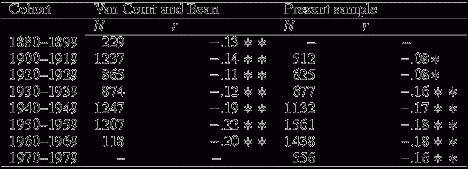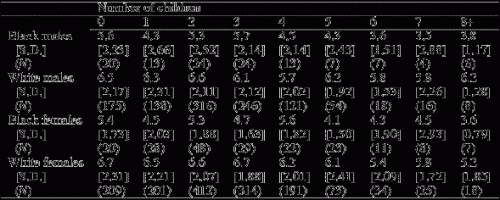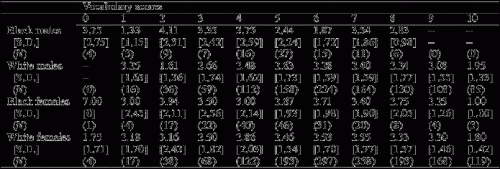
Evolution, Eugenics, and God's Will by Marian Van Court

This painting provides a wonderful artistic illustration for the subject of this paper. If one understands the large genetic component to our very souls -- not only our intelligence, but our honesty, our kindness, our courage, our creativity, and our unique personalities -- then one can immediately grasp the potential of eugenics for evolving ourselves into better people, more fully in the image of God. Francis Galton envisioned eugenics as a large-scale humanitarian endeavor, firmly grounded in science, which also contained the seed of a new religion:
The chief result of these Inquiries has been to elicit the religious significance of the doctrine of evolution. It suggests an alteration in our mental attitude, and imposes a new moral duty. The new mental attitude is one of a greater sense of moral freedom, responsibility, and opportunity; the new duty which is supposed to be exercised concurrently with, and not in opposition to the old ones upon which the social fabric depends, is an endeavor to further evolution, especially that of the human race.
Those who enjoy a sense of communion with God can dwell on the undoubted fact that there exists a solidarity between themselves and what surrounds them, through the endless reaction of physical laws among which the hereditary influences are to be included. They know that they are descended from an endless past, that they have a brotherhood with all that is, and have each his own share of responsibility in parentage of an endless future ( Blacker, 1952).
Evolution is the Crown Jewel of Creation
Evolution by natural selection fashioned creatures with conscious awareness from one-celled animals over vast expanses of time. The consciousness of human beings has evolved to such a degree that we are able to love one another, to experience joy at the beauty of nature, to create, to explore, to struggle to comprehend the nature of God, and even to manifest glimmerings of divinity ourselves. If Creation can be said to have anything resembling a purpose or destiny in a spiritual sense, the evolution of conscious beings has got to be at the very heart of it. For this reason, evolution by natural selection can legitimately be regarded as the "crown jewel" of Creation.
And isn't "the crown jewel of Creation" a far cry from how Darwin's theory was first greeted by the public in the late 1800s?! Christianity's vehement rejection of the theory of evolution was understandable since it contradicted a literal interpretation of the Bible. Although it was a painful process, fraught with bitterness, in the long run this conflict was healthy. Now we think of the story of Adam and Eve as an allegory, and a lovely one at that. We have sufficient understanding to welcome Darwin's message because we recognize evolution as a vitally important key to life, to our consciousness, and ultimately to God.
All major religions say, in one way or another, that we are created in God's image. In Genesis it is written, "So God created man in his own image, in the image of God created he him; male and female created he them." Jesus said, "The Kingdom of God is within you." An Indian proverb (East Indian) elegantly expresses a similar notion:
breathes in plants,
dreams in animals,
and awakens in human beings.
Consider the fact that we were created in God's image through the process of evolution--this can hardly be an insignificant fact. The creation story in the Bible may be lovely, but isn't the way we actually evolved into ourselves more awesome and more overwhelmingly beautiful than God merely dictating by fiat the existence of the first man and woman? Science has established conclusively that evolution is true, and this is not in doubt. But perhaps evolution could also be said to surpass the story of the Garden of Eden as being more probably true purely on aesthetic grounds (just as in physics sometimes the more beautiful of two theories is given more credence).
Dysgenics: A Cosmic Sacrilege?
Un-natural Selection
How did dysgenics come about? Simple. By a process that might well be called "un-natural selection," because it is a reversal of natural selection resulting from society's corrupting influence. In a nutshell:
(1) Modern societies quite understandably take care of sickly people who previously would have died, but then these people go on to have children with a high incidence of the same illnesses, and
(2) although contraception is available to everyone, it's more consistently and effectively used by all of the "best" and the most admirable people, i.e., the smartest, most responsible, hard-working people who make a positive contribution to the larger society.
A high percentage of the "worst" and least-admirable people either don't know, or don't care, that unprotected sex brings babies into the world, so they have sex with little or no thought of contraception. They include: psychopaths; sociopaths; criminals; psychologically disturbed people of all varieties; alcoholics; drug addicts; irresponsible, short-sighted, and selfish people; the mentally retarded; just-plain-dumb people; and people who are too lazy to take a trip to the corner drugstore. Because of their negligence, they contribute a disproportionate share of their least- admirable genes to future generations.
Professor Richard Lynn of the University of Ulster conducted a study in which he found that despite lengthy sojourns in prison, London criminals still managed to produce more children on average than ordinary, law-abiding citizens (Lynn, 1995). Lynn calculated the increase in crime that would be expected
, given the degree to which criminal behavior is a function of heredity, and estimated the increase in crime which should result (other factors being equal) by the excess fertility of criminals. His excellent book, Dysgenics (see review on this website) is the most comprehensive and authoritative work on the issue of eugenics and dysgenics to date.
Instead of implementing a eugenics program of incentives and disincentives in order to rectify the problem of dysgenics, most governments are making it worse by subsidizing the reproduction of the least-productive segment of society, and taxing heavily the most productive segment.
Farmers and breeders have utilized the principle of "select the best" for their crops, livestock, and pets, and this has given us bountiful crops of every variety, high-yield milk cows, fast, beautiful, and gentle horses. Yet we take far less care when it comes to human beings, and in effect, we "select the worst." It would be unconscionable to breed stupid, sickly, and vicious dogs -- surely it's at least as cruel to do this to human beings.
Eugenics
It's not necessary, nor even possible, to do away with contraception entirely because the technologies and information for preventing conception are "out," and only a severely repressive government could keep them from the people, and then only partially. However, we can reverse dysgenics and continue the process of improving the human species by implementing a eugenics program. We can once again evolve in a positive direction with self-directed evolution. From a spiritual point of view, when we take on the mantle of eugenics, we insure that our evolution will be guided more directly by God, who lives and breathes within us.
The word "eugenics" conjures up draconian images of Nazis and death camps, but even a cursory examination of the issues shows that this association is unwarranted. Eugenics has been practiced since ancient times, and in the 20th century Sweden had a eugenics program that lasted for 40 years (Broberg and Roll- Hansen, 1996). In fact, a total of 28 countries practiced eugenics in the 20th century, and one country, Germany, committed genocide, so despite Marxist propaganda to the contrary, it's apparent that no causal association can be drawn between eugenics and mass murder. (For a more detailed discussion of these important issues, see the review of Dysgenics on this website.)
Critics of eugenics often argue that we will never agree upon which traits we want, so therefore, the entire enterprise is hopeless. But this argument is utterly without merit. It's perfectly predictable that we will choose health, beauty, intelligence, talent, courage, kindness, and honesty for our children because these are universally valued traits. All over the world parents value them today, just as parents valued them a hundred years ago, and a thousand years ago.
Is Dysgenics God's Will? Three Fundamental Truths
Scientists entering the realm of theology for the first time suddenly find themselves on very shaky ground, indeed. How does one know this or that is true? Where's the evidence? In this paper, I have assumed only that many readers believe in God. Now, given this assumption, at least it becomes possible to say, "If one accepts this statement about God, then such-and-such logically follows."
Is the current genetic deterioration of the human species "God's will?" I hope to address this question in a such a way that it will be applicable to Christians and devotees of other religions, as well as to most people who believe in God but don't adhere to any particular religious creed. First I'll state three fundamental truths about the nature of God upon which all major religions agree. Then I'll attempt to draw inferences from them about dysgenics.
(1) God loves us. All major religions hold that this is so.
(2) God wants us to be kind to one another. Jesus said "Love thy neighbor as thyself." The current Dalai Lama (spiritual leader of Tibetan Buddhists) says, "Be kind to one another." Kindness to others is one of the most important -- if not the most important -- teaching of all religions.
(3) God has accorded human beings a special place in the animal kingdom, with a distinct destiny. All major religions believe that human beings are the pinnacle of God's creation. In Genesis, God said, "[L]et [man] have dominion over the fish of the sea, and over the fowl of the air, and over the cattle, and over all the earth, and over every creeping thing that creepith upon the earth." In Hindu writings about reincarnation, people are considered the highest and most spiritually advanced creatures. No major religion teaches that we are indistinguishable from lower animals.
Now we get to the heart of the matter--namely, what inferences can we draw from these three fundamental truths? Is dysgenics God's will? Is dysgenics contrary to God's will? Or, is dysgenics simply irrelevant to God?
Let's take the first statement, that God loves us. If God loves us, then he doesn't want us to suffer unnecessarily. That certainly follows, doesn't it? Dysgenics means that our children's generation will be less well-endowed genetically than our generation is, and it's inescapable that they will suffer as a result. To be sickly, to be retarded, to suffer psychiatric illness -- these are all things we definitely do NOT want for our children, nor for anyone else we love. It hardly requires a giant leap of faith to conclude that if God loves us, he doesn't want us to suffer needlessly.
With regard to the second point, that God wants us to be kind to one another -- is it kind for us to leave the next generation genetically stupider, more sickly mentally and physically, and worse people morally? Inflicting pain and suffering on enormous numbers of innocent beings is hardly the definition of kindness. I challenge the reader: can you think of anything that is more cruel, on such a vast scale? Communism certainly comes to mind as a possible contender, but I would argue it ranks second to dysgenics. At any rate, we know what our health means to us--it means everything. And we know how much our intelligence means. Imagine what life would be like if you had been born mentally retarded -- you wouldn't even be you! These traits are profoundly important to everyone, past, present and future.
In addition to leaving our children's generation a poorer genetic legacy, if we do nothing about dysgenics, we will also bequeath to them the same cultural taboo against eugenics which we have inherited -- the taboo which has paralyzed the Western world for the past 50 years on the vitally important issue of our own biological evolution. Until dysgenics is reversed, each generation will become successively less and less capable of solving the problem of dysgenics -- or any problem, for that matter.
Third, God has accorded human beings a special place in the animal kingdom, with a distinct destiny. Could our "distinct destiny" possibly be to evolve closer and closer in the image of God for hundreds of thousands of years -- more intelligent, more loving and kind, healthier and more civilized -- and then suddenly to reverse direction, to squander all the hard-won gains, and evolve backwards, less in the image of God, more like lower animals? How could this be God's will? It's inconceivable.
By examining three fundamental truths upon which all major religions agree, a very short and sure step of reasoning leads us, in each case, to the conclusion that dysgenics must be against God's will.
Conclusion
Our biology and our spirituality are inextricably linked, and they evolve (or de-volve) hand in hand. From the standpoint of Christianity, it's fascinating to realize that as we de-volve to become more criminal, more stupid, and more primitive, there will inevitably be (1)
a large increase in the total amount of sin, and therefore (2) a higher percentage of people condemned to Hell!! Amazing though it may seem, science has proven that Good and Evil have roots in biology, and we ignore this fact at our peril.
In conclusion, the most capable of our small, ape-like ancestors survived and reproduced in greater numbers so that our species gradually evolved larger brains, higher intelligence, and greater human-ness, and the result of this extraordinary Creation is us. However, "we" aren't the end of the story!! "Creation" is still in motion, and now we are participants in it, whether for good or for ill. We can, and we must, reverse the current process of dysgenics if we are to carry out God's will, and if we feel any love or compassion for all those who come after us.
REFERENCES
Blacker, C. P., 1952, Eugenics: Galton and After, Gerald Duckworth & Co, London
Broberg, Gunnar, & Nills Roll-Hansen, 1996, Eugenics and the Welfare State: Sterilization Policy in Denmark, Sweden, Norway, and Finland, Michigan University Press, East Lansing
Comings, David, 1996, The Gene Bomb, Hope Press, Duarte, CA
Meshberger, Frank L., 1990, "An Interpretation of Michelangelo's Creation of Adam Based on Neuroanatomy," JAMA, Oct. 10, 1990, vol. 264, No. 14
Lynn, Richard, 1996, Dysgenics: Genetic Deterioration in Modern Populations, Praeger, Westport, Connecticut
Lynn, Richard, 1995, "Dysgenic fertility for crime," Journal of Biosocial Science, 27, p. 405-408
Van Court, Marian, and Frank Bean, 1985, "Intelligence and Fertility in the United States: 1912-1982," Intelligence, vol. 8, p. 23-32







